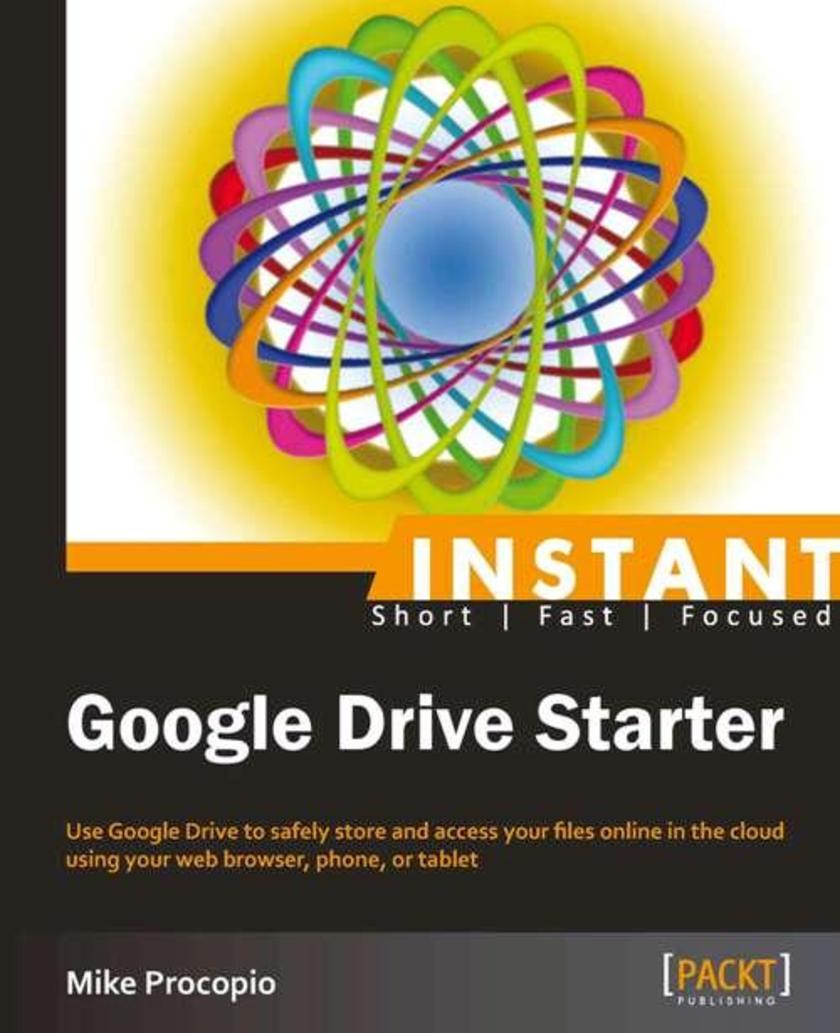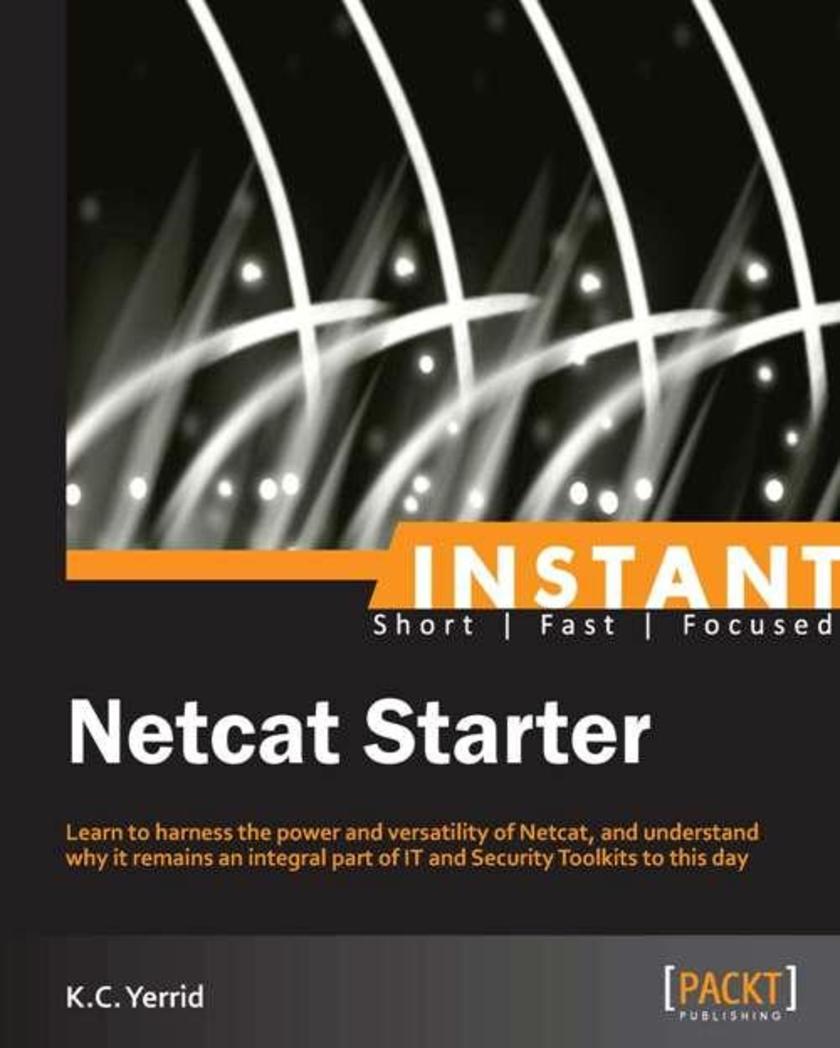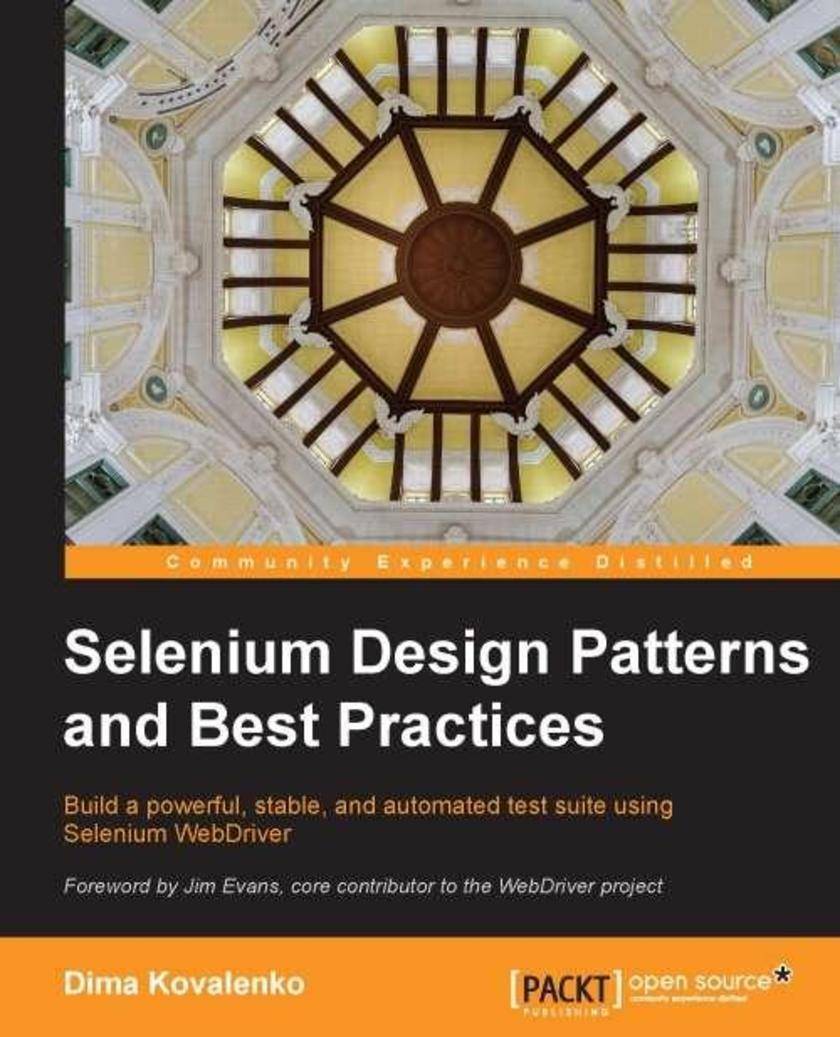
Instant Google Drive Starter
¥35.96
Get to grips with a new technology, understand what it is and what it can do for you, and then get to work with the most important features and tasks. This book is a Starter which teaches you how to use Google Drive practically. This book is perfect for people of all skill levels who want to enjoy the benefits of using Google Drive to safely store their files online and in the cloud. It’s also great for anyone looking to learn more about cloud computing in general. Readers are expected to have an Internet connection and basic knowledge of using the internet.

Instant Netcat Starter
¥45.77
Get to grips with a new technology, understand what it is and what it can do for you, and then get to work with the most important features and tasks. This book is for IT professionals who have no previous experience with Netcat but need to understand it quickly and easily.

Swift Essentials
¥90.46
Whether you are a seasoned Objective-C developer or new to the Xcode platform, Swift Essentials will provide you with all you need to know to get started with the language. Prior experience with iOS development is not necessary, but will be helpful to get the most out of the book.

Cassandra High Availability
¥45.77
If you are a developer or DevOps engineer who understands the basics of Cassandra and are ready to take your knowledge to the next level, then this book is for you. An understanding of the essentials of Cassandra is needed.

Mastering Apache Maven 3
¥80.65
If you are working with Java or Java EE projects and you want to take full advantage of Maven in designing, executing, and maintaining your build system for optimal developer productivity, then this book is ideal for you. You should be well versed with Maven and its basic functionality if you wish to get the most out of the book.

Node.js Design Patterns
¥90.46
If you're a JavaScript developer interested in a deeper understanding of how to create and design Node.js applications, this is the book for you.

Building Mapping Applications with QGIS
¥80.65
If you are an experienced Python developer who wants to create your own geospatial applications with minimum fuss, this is the book for you. While some familiarity with mapping applications would be an advantage, no prior knowledge of geospatial concepts is required. Even if you've never used QGIS before, this book will quickly get you up to speed.

Learning Concurrent Programming in Scala
¥80.65
This book is a must-have tutorial for software developers aiming to write concurrent programs in Scala, or broaden their existing knowledge of concurrency. This book is intended for Scala programmers that have no prior knowledge about concurrent programming, as well as those seeking to broaden their existing knowledge about concurrency. Basic knowledge of the Scala programming language will be helpful. Readers with a solid knowledge in another programming language, such as Java, should find this book easily accessible.

Learning OpenStack,Networking (Neutron)
¥80.65
If you are an OpenStack-based cloud operator with experience in OpenStack Compute and nova-network but are new to Neutron networking, then this book is for you. Some networking experience is recommended, and a physical network infrastructure is required to provide connectivity to instances and other network resources configured in the book.

PostgreSQL Administration Essentials
¥50.13
If you are a database administrator who needs to get to grips with PostgreSQL quickly and efficiently, then this book is for you. This book will also be highly beneficial if you are a project leader or a developer who is interested in knowing more about database systems or bottleneck detection, as it will enable you to work more closely and cooperatively with your administrators.

JMeter Cookbook
¥80.65
This book is great for you if you are a developer, quality assurance engineer, tester, or test manager who is looking to get a firmer grasp of elementary, deep, and advanced testing concepts using Apache JMeter. It’s assumed you have access to a computer and an Internet connection. No prior testing or programming experience is required, but would be helpful.

Proxmox High Availability
¥80.65
If you want to know the secrets of virtualization and how to implement high availability on your services, this is the book for you. For those of you who are already using Proxmox, this book offers you the chance to build a high availability cluster with a distributed filesystem to further protect your system from failure.

Phonegap and Angularjs for Cross-platform Development
¥59.94
This book is intended for people who are not familiar with AngularJS and who want to take their PhoneGap development skills further by developing apps using different JavaScript libraries. People with some knowledge of PhoneGap, HTML, CSS, and JavaScript will find this book immediately useful.

WebRTC Integrator's Guide
¥90.46
This book is for programmers who want to learn about real-time communication and utilize the full potential of WebRTC. It is assumed that you have working knowledge of setting up a basic telecom infrastructure as well as basic programming and *ing knowledge.

R Graph Essentials
¥71.93
This book is targeted at R programmers who want to learn the graphing capabilities of R. This book will presume that you have working knowledge of R.

Selenium Design Patterns and Best Practices
¥57.76
Whether you are an experienced WebDriver developer or someone who was newly assigned a task to create automated tests, this book is for you. Since the ideas and concepts are described in simple terms, no previous experience in computer coding or programming is required.

Mathematica Data Visualization
¥63.21
If you are planning to create data analysis and visualization tools in the context of science, engineering, economics, or social science, then this book is for you. With this book, you will become a visualization expert, in a short time, using Mathematica.

Microsoft System Center Configuration Manager Advanced Deployments
¥90.46
If you are an experienced Configuration Manager administrator looking to advance your career or get more from your current environment, then this book is ideal for you. Prior experience of deploying and managing a Configuration Manager site would be helpful in following the examples throughout this book.

BeagleBone for Secret Agents
¥45.77
If you have some experience with the BeagleBone or similar embedded systems and want to learn more about security and privacy, this book is for you. Alternatively, if you have a security and privacy background and want to learn more about embedded development, this book is for you. You should have some familiarity with Linux systems and with the C and Python programming languages.

MariaDB High Performance
¥80.65
This book is aimed at system administrators/architects or DBAs who want to learn more about how to grow their current infrastructure to support larger traffic. Before beginning with this book, we expect you to be well-practiced with MySQL/MariaDB for common usage. You will be able to get a grasp quickly if you are comfortable with learning and building large infrastructures for MariaDB using Linux.

Applied SOA Patterns on the Oracle Platform
¥107.90
Applied SOA Patterns on the Oracle Platform is aimed at architects practicing SOA or traditional integration, and also at technical team leaders implementing Oracle Fusion under SCRUM or WF methodology.




 购物车
购物车 个人中心
个人中心



